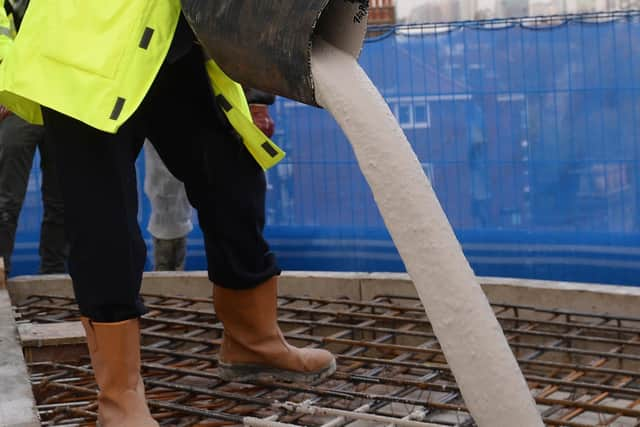How concrete can contribute to a more sustainable future - Dr Gareth Davies & Dr Luan Ho
With a staggering 30 Gt produced annually, the material consumption is over 3.5 tonnes of concrete per person annually. The majority of the emissions, 88.5 per cent, emanate from cement production, the essential ingredient in concrete.
Carbon sequestration in concrete presents a promising avenue to offset these emissions. This process, often referred to as carbonation or mineralisation, essentially reverses the initial cement production steps, where carbon dioxide is detached from calcium carbonate (limestone).
Advertisement
Hide AdAdvertisement
Hide AdControlled carbonation of cementitious material, although first proposed in the 1970s, is recently garnering increased attention due to its substantial potential to mitigate against the colossal emissions from concrete production.


However, carbonation is not without its challenges. Uncontrolled, it can lead to the corrosion of steel in reinforced concrete and the formation of harmful compounds, jeopardising the structural integrity of buildings.
Yet, advancements in controlled carbonation methodologies have demonstrated the potential to not only sequester carbon dioxide but also enhance the properties of concrete.
One such method involves utilising accelerated carbonation chambers to carbonate precast materials, offering control over essential parameters such as CO2 concentration, humidity, and temperature. This impacts the rate and depth of carbonation, with the formation of calcium carbonate in the exterior pores blocking further carbonation.
Advertisement
Hide AdAdvertisement
Hide AdEmerging techniques explore embedding CO2-rich materials within the concrete mixture. A notable investigation by Massachusetts Institute of Technology (MIT) researchers examined incorporating sodium bicarbonate, which dissolves and releases CO2 during curing. This innovative method not only sequesters carbon but also addresses the detrimental impacts of late-stage carbonation, such as shrinkage and crack formation. Furthermore, the possibility of reusing carbonated Recycled Concrete Aggregate (RCA) from construction and demolition waste, which amounts to around three billion tonnes annually, offers an additional layer of environmental benefits.
Although using RCA poses challenges such as increased costs and micro-cracking, controlled carbonation mitigates these issues and allows for a decrease in both water absorption and leaching instability.
These advances in carbonation technology could potentially sequester two Gt of CO2 annually if implemented at scale, significantly reducing the environmental footprint of concrete production. When combined with the predicted 50 per cent reduction from electrification, emissions could be curtailed to just 32.7 per cent of the current levels.
However, the journey towards sustainable concrete production is multifaceted and complex.
Advertisement
Hide AdAdvertisement
Hide AdIn conclusion, the path to mitigating the environmental challenges posed by concrete production lies in innovative solutions such as carbon sequestration.
Dr Gareth Davies and Dr Luan Ho are carbon reduction scientists at Tunley Environmental.
Comment Guidelines
National World encourages reader discussion on our stories. User feedback, insights and back-and-forth exchanges add a rich layer of context to reporting. Please review our Community Guidelines before commenting.